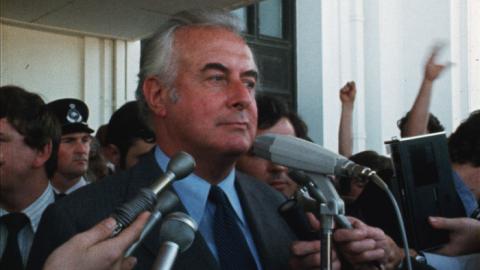Part 2 of our 2-part feature. Read Part 1
On 11 November 1975, Governor-General Sir John Kerr dismissed Prime Minister Gough Whitlam and his government from office. We take a look at the NFSA’s digital preservation work on the surviving original news film shot on the day by Channel 7 camera operator Bob Wilesmith.















